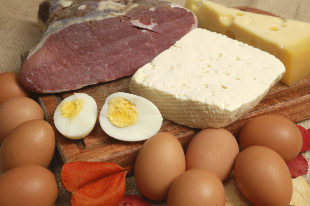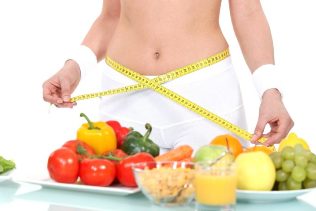The ketone diet. What is the ketogenic diet? What are the results of the ketone diet and what are the evaluations. how it works, there is some difficulty, which menu in a ketone diet and is harmful.

- The keto diet
- The ketone diet is a low-carb, high-fat diet that aims to trigger ketone bodies in the body.
Why is the ketogenic diet effective, what are the contraindications and revisions, what is the principle of action? What should be included in the keto diet menu and what about the criticisms of those who lost weight? We will discuss that today.
How does the ketone diet work?
When fats, proteins and carbohydrates are present in our diet, our body obtains energy from glucose. We get glucose only from carbohydrates. Now that supermarkets are in direct access, this is the most common type of food. But what happened in those days when there were not enough carbohydrate products, like cereals or bread, due to bad harvest, habitat halo or seasonality?
The carcass was forced to obtain energy from fatty acids and proteins. You may remember my video on running to lose weight - here it is - in it I watched the process of obtaining energy by oxidizing fatty acids. Now I will remind you briefly - all of our organs, which have mitochondria in tissue cells, work very well with fatty acids. This is the cardiac muscle of the myocardium, and the skeletal muscles (the one we pump at the gym) and the smooth muscles.
However, our brain, which is 60% fat, does not lose weight, even a long hunger strike does not significantly impair mental abilities. Because? Reason - BBB The blood-brain barrier is a barrier that ensures the permanence of the internal environment of the brain. It is he who does not allow fatty acids to pass - not outside (which is why the brain does not lose weight), but also inside. And the brain is unable to consume fatty acids as an energy source.
However, the brain cannot run out of fuel, and nature has predicted that as a result of nutrition, which cannot supply enough glucose, the brain switches to an alternative fuel source - the so-called ketone bodies.
- Ketone bodies
Three substances are called ketone bodies
- acetoacetic acid (acetoacetate)
- beta-aminobutyric acid (hydroxybutyrate)
- acetone
These substances are formed in the liver from fatty acids in a process called ketogenesis. Not much acetone is formed, our main fuel is betaaminobutyric acid. It is in large part that the central nervous system works during the period of lack of carbohydrates in the diet.

Is the keto diet bad or not?
Ketogenesis is a completely normal metabolic process and should not be feared. All fears come from the fact that the state of ketosis - when the body works with ketone bodies is often mistaken for pathological and requires urgent acidosis intervention. But these things are different and now we are going to discuss a little bit what the essence is.
Ketoacidosis
What is ketoacidosis. This is almost the same as ketosis, but when it is caused not by lack of glucose due to lack of carbohydrates, but by lack of insulin. I remember that our most important hormone, insulin, is a transport agent. This is our charger that knows how to transport glucose across the cell membrane.
When there is too much glucose, but there is no insulin or it does not perform its functions, the cell begins to feel hunger for energy in the same way as in a carbohydrate-free diet. As a result, the body produces a lot of hormones that can break down fat (lipolytic, in this case they are called contra-insular) and the liver starts to produce ketone bodies from fatty acids. What is happening?
There is too much undigested glucose, too many ketone bodies, and the kidneys are trying to get rid of excess ketones and glucose, which causes dehydration - the so-called osmotic diuresis. As a result of diuresis, electrolytes are eliminated - and you remember that this is too much and it is very bad from this video, even two - the balance of electrolytes changes to acidification and, as a result, this same ketoacidosis develops. all of this requires urgent hospitalization, as the patient can easily move the horses.
Of course, this situation is only possible in two cases
- Type 1 diabetes when the pancreas does not produce insulin
- Dehydration - diarrhea, vomiting, use of diuretics.
That is, if you are healthy, you do not have type 1 diabetes, you need not be afraid of ketoacidosis. In your case, the nervous system will function perfectly in ketone bodies.
So, how to use the Keto diet
Firstand the most important thing is to get into ketosis. And this is one of the most difficult tasks. Because in most cases - remember I told you that takeo homeostasis - people for decades eat foods that contain carbohydrates for the first time - will be stress on the body. The carcass is not used to it and in a day or two you will not go into ketosis. Takes time. First, the body will eat the remaining glucose and glycogen. Then it will try to obtain glucose using the amino acid gluconeogenes, glycerin, lactic acid. And only when you are completely out of the mogota, will the ketogenesis process begin and, with a creak, will you begin to drag the central nervous system's energy supply system onto new tracks. Remember - the carcass doesn't really like homeostasis and resists the best it can.
This is the first time that is more difficult - you are numb, angry, you have no strength, your brain refuses to function, your head is spinning - and a lot of other delights. And that state lasts - for everyone in different ways - but maybe up to two or three weeks.
Second. To get into ketosis, you need to cut your carbs or leave them at a minimum - and that's another difficulty. There are organs that cannot use fatty acids or ketone bodies for energy. They need glucose and only glucose - this is the intestinal epithelium, the vascular endothelium, the lens of the eye, the adrenal cortex, something else - I don't remember. So you can't leave them without glucose. The carcass will get glucose for them by gluconeogenesis, either from their muscles or a minimum of carbohydrates, coming with food. But that's exactly the point - remember homeostasis - the desire to maintain balance at any cost - getting into ketosis is difficult, but getting out of it is easy. And then, hello, the stock of fat on the sides of your back.
Third- to get into ketosis, you need to eat a lot of fats and in no case overdo the proteins !!!! This is also very difficult to control. Because with an excess of protein in the diet - with the help of the same gluconeogenesis, a carcass of glucose urgently - and you will again get out of this state of hard-won ketosis. If there is little protein, the muscles will be gradually lost. And reaching that balance is very, very difficult for a beginner. Everything is exactly the same with fats only - 80% of the diet must be fats.
Room- the difficulty in assessing whether we have ketosis or not.
- The test to detect the presence of acetone in the urine with strips does not make sense. We may be in ketosis, but there will be no acetone in our urine.
- A blood test with a glucometer with special strips for ketone bodies is possible, but these strips are not cheap.
- Finally, there are special instruments for the determination of acetone in breathing. They were invented for epileptics because the ketogenic diet is good for dealing with epileptic seizures - but they also cost around $ 100.
And finally, if you decide to try the ketone diet, how do you compose your diet?
- protein - 1, 5-2 grams per body weight. This is conditional.
- The rest is fat.

What foods are suitable for the ketone diet?
- eggs with yolk
- all cheeses
- fat cottage cheese
- sour cream
- lard
- pig
- nuts
- salmon
- trout
- salmon
- lamb
















